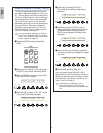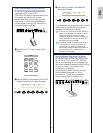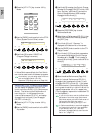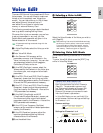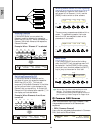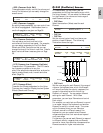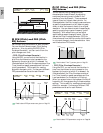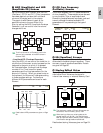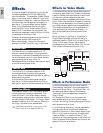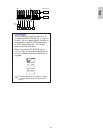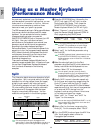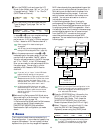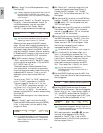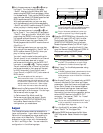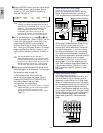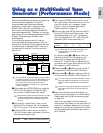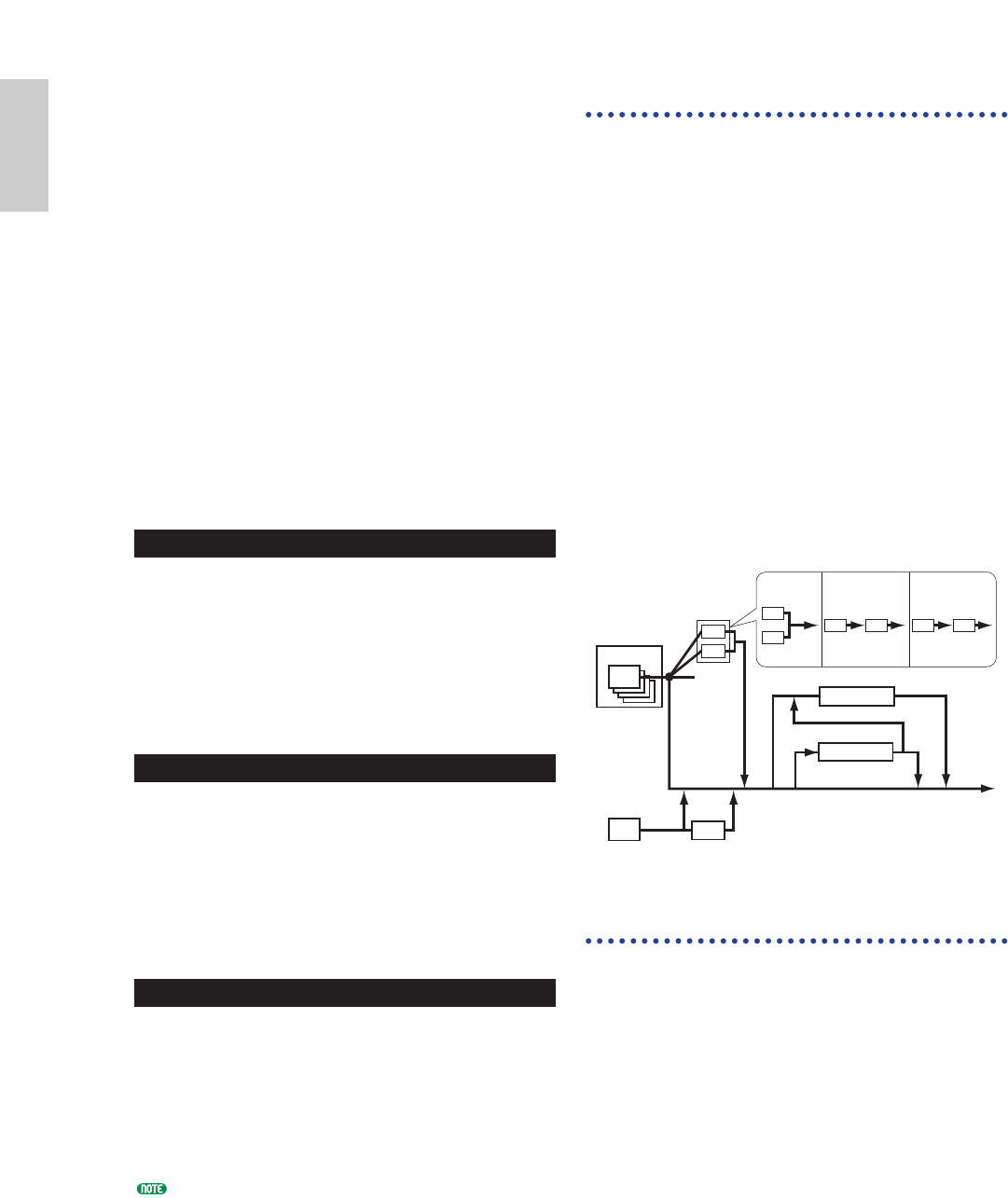
50
Basics
Section
Effects
In the final stages of programming, you can set
the effects parameters to further change the
sound’s character. To generalize, System Effects
apply to the overall sound, whether it is a Voice,
a Performance, a Song, etc. Insertion Effects, on
the other hand, can be applied individually to
each Voice. This synthesizer has two System
Effect Units (Reverb and Chorus) plus two
Insertion Effect Units. When using a Plug-in
Board (PLG) installed on the instrument, you
can also use a separate Insertion Effect Unit that
is dedicated for the Plug-in Part.
Different effects settings can be set per Voice (in
Voice Mode) and per Performance (in
Performance Mode), though the connection
between the Effect Units will vary in each case.
Reverb Unit
The Reverb Unit includes a selection of 12
different reverb-type effects, including realistic
simulations of the natural reverberation found in
various halls and rooms. In Voice Mode, Reverb
settings can be set for each Voice. In
Performance Mode, the Reverb settings will apply
to the Performance as a whole.
Chorus Unit
The Chorus Unit includes a selection of 23
chorus-type effects, including a flanger and
others. Most of these effects are ideal for adding
thickness to the sound.
In Voice Mode, Chorus settings can be set for
each Voice. In Performance Mode, the Chorus
settings will apply to the Performance as a whole.
Insertion Effects
The Insertion Effect 1 Unit includes 24 effects
including chorus, flanger and auto-wah. The
Insertion Effect 2 Unit offers delays, reverbs,
rotary speaker, amp simulation and other effects,
providing a total of 92 effects. If a Plug-in Board
has been installed, up to 24 Insertion Effects for
the Plug-in Voices will also be available.
Details about each Effect Type are given in the
Effect Type List in the separate Data List.
Effects in Voice Mode
In Voice Mode, you can set up the effect type and
its value for each Effect Unit (Reverb, Chorus and
Insertion Effects) and store them with each Voice.
Furthermore, you can determine that each
Element connects or bypasses the Insertion Effect
Units. When you connect an Element to Insertion
Effects, you can also specify the connecting way of
two Units (series or parallel, as illustrated below).
The combined signal from all Voice Elements —
after application of the Insertion Effects — is
sent to the Reverb and Chorus System Effect
Units.
When you want to use Plug-in Voices from a
Plug-in Board attached, you can also set up a
dedicated Insertion Effect Unit for each Plug-in
Voice. In this case, a Plug-in Voice signals
processed with the Insertion Effect Unit will be
then routed to Reverb and Chorus Units.
Effects in Performance Mode
In Performance Mode, you can use an Insertion
Effects setting “borrowed” from ones respectively
stored with Voices (Parts) . For a Plug-in Part, you
can select and use an Insertion Effect setting
“borrowed” from ones respectively stored with
Plug-in Voices.
For Reverb and Chorus, you can create new
settings dedicated for an entire Performance,
without “borrowing” existing Reverb and Chorus
settings stored with a Voice.
In the following illustration, a mixer represents
the logic behind how the different effects are
applied to the sound in Performance Mode. Each
Part (1 to 16) is fed to the mixer through either
Insertion Effect 1 or Insertion Effect 2. The
signals for all Parts are summed in the mixer and
then the System Effects (Reverb and Chorus) are
applied to the mix as a whole.
OFF
THRU
Element 1~4
Voice
Insertion Effects
Connection
EP1➞EP2 EP2➞EP1EP1:EP2
Plug-in Voice
1
2
1
2
2
1
1
2
Chorus
Insertion Effects
Reverb



